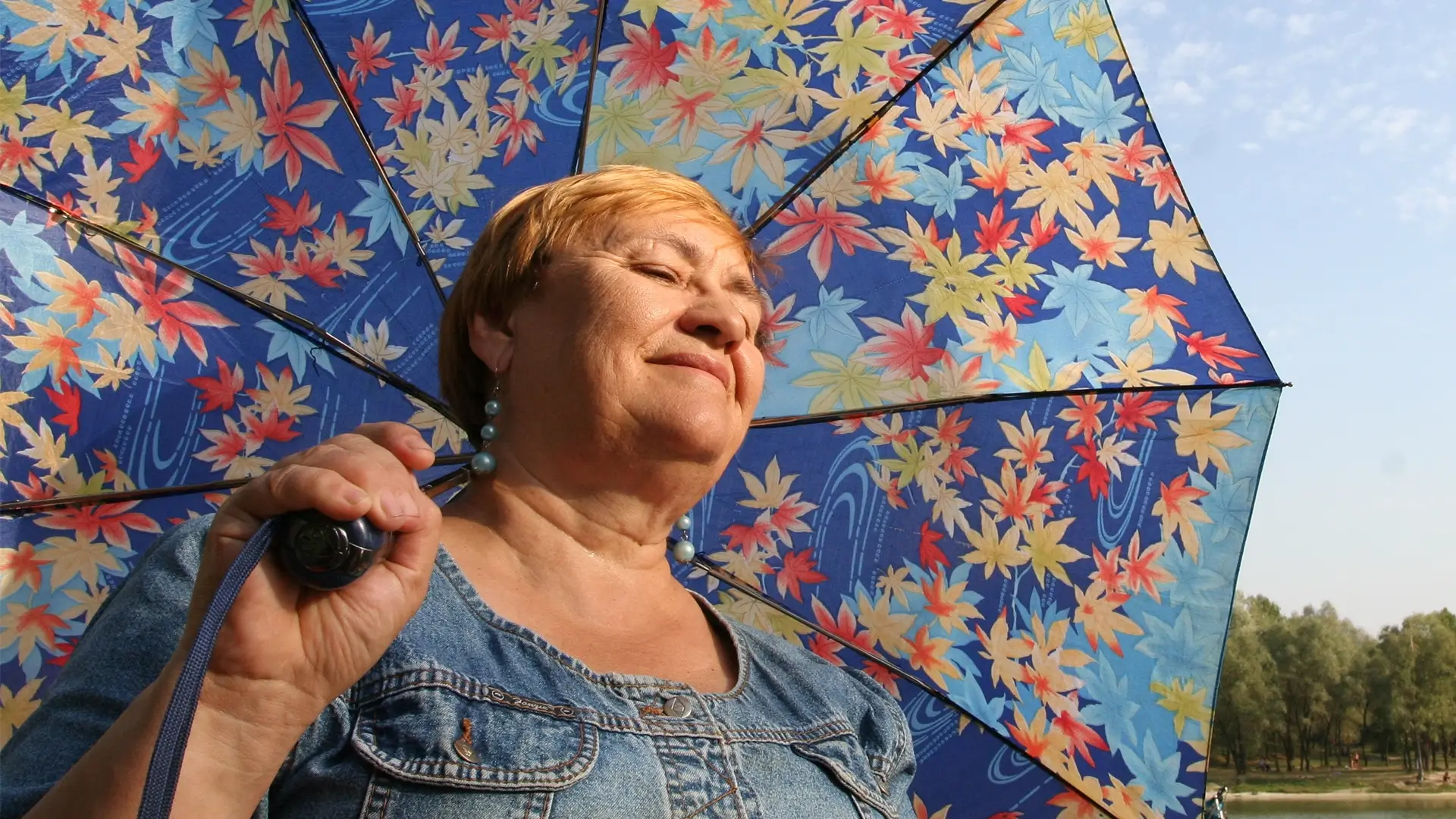
A daily dose of sunshine can be nice and even healthy—but too much sun can be dangerous, especially for older adults and people with disabilities. According to the World Health Organization, heat stress can worsen underlying conditions— including cardiovascular disease, diabetes, mental health, and asthma—putting people at a unique risk for experiencing heat-related illnesses. For older adults in particular, hotter days can present additional challenges as their bodies usually do not adjust to sudden temperature changes as well as others. The following tips can help keep you prepared, safe, and cool while under the sun.
Wear sunscreen
Being in the sun without proper protection increases the risk of experiencing sunburn, which can be very painful and uncomfortable. The long-term effects of unprotected sun exposure include premature skin aging and skin cancer. The National Institute on Aging suggests using broad spectrum sunscreen with an SPF (sun protection factor) of 15 or higher. Reapply your sunscreen throughout the day, especially if you are swimming or sweating. If you do get sunburned, stay out of the sun until your skin has healed and use cool cloths, ointments, or moisturizers to treat the affected area in the meantime.
Stay in the shade
If you are going to be outside during the day for an extended period of time, shade will be your friend. While waiting for the bus, spending time in the park, or engaging in any other outside activity, be sure to take advantage of areas that provide shade—such as trees or awnings. Even when skies are cloudy, it’s important to be careful as the sun’s rays can go through clouds. According to the National Institute on Aging, exposure to ultraviolet (UV) light from the sun is one of the biggest risk factors for skin cancer. The National Library of Medicine also found that repeated exposure to UV radiation causes premature aging of the skin. In case you don’t want to have to worry about finding shade, you can also bring it with you in the form of an umbrella or a wide-brimmed hat!
Dress light
Spending time outside in warmer temperatures increases the likelihood of overheating. According to the CDC, this risk can be made worse for people with disabilities who take certain medications for their condition, such as antidepressants and anti-inflammatories which tend to affect the body’s ability to control its temperature or sweat. One effective way to prevent overheating is by wearing lightweight, light-colored, loose-fitting clothing that still covers your skin. Doing so will protect you from direct sun exposure while supporting your body temperature to stay regulated. As a general rule of thumb, natural fabrics like cotton may feel cooler than synthetic fibers.
Stay hydrated
The simple fact is our bodies need fluids, especially water. In fact, human bodies are mostly made up of water (about 60%, according to the USGS). But one of the biggest dangers of sun exposure is dehydration. Stay ahead of it by drinking plenty of liquids like water, fruit or vegetable juices, or drinks that contain electrolytes – minerals that dissolve in our body fluids, supporting our ability to function and retain water. Certain electrolyte-rich beverages include sports drinks and enhanced waters, or you could even put flavored dissolvable drink mixes in your daily water serving. Taking a reusable water bottle outside with you is a great way to ensure you stay hydrated on the go. Harvard Health reports that most people need about four to six cups of water each day. However, this does not apply to older adults. Their bodies need more water because, according to the NCOA, older adults experience body composition changes over time that leave them with less water in their bodies. If your doctor has told you to limit your liquid intake, ask what you should do to prepare for hot weather days.
To better plan ahead for heat risks brought on by hot and sunny days, be sure to check your local news for weather and safety updates. Also, seek medical care immediately if you or someone you know is experiencing symptoms of a heat-related illness like muscle cramps, headaches, dizziness, or nausea.




